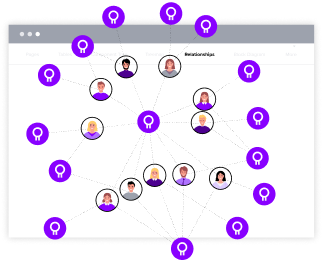
Future State Modeling
Model and test changes to your architecture to understand their impact on people, processes, technology, and capabilities.
Merge, acquire, or divest with a full view of your current and target IT landscapes, and plan how to get there.


How EA Fits into M&A
There are many ways to merge organizations. Unless you're running the acquired business as an autonomous subunit, prioritize consolidations that align with the company’s strategic goals.
How EA Fits into M&A
Post-merger integration estimates are commonly based on limited knowledge from due diligence. Ensure success by finding what’s really needed for consolidation.
How EA Fits into M&A
Full mergers often require many consolidations that take considerable time and effort. Identify feasible projects by assessing their impact on existing business plans and the IT portfolio.
Here’s how we help your organization merge and integrate successfully.
Model and test changes to your architecture to understand their impact on people, processes, technology, and capabilities.
Leverage powerful integrations to rapidly form a single source of truth over the applications and IT your organization and the target organization use.
Get dynamic, data-driven visualizations and dashboards that are board-room ready to gain stakeholder buy-in. Customize them to the needs of different stakeholders and never worry about out-of-date documentation or diagrams.
Model and test changes to your architecture to understand their impact on people, processes, technology, and capabilities.
Success Stories
See how organizations are quickly gaining full visibility into technology, people, and processes.
Read About Real Success



On-demand webinars, solutions, downloadable guides, and more to simplify your IT landscape and integrate better.
M&A is a term used to describe companies coming together in two different ways: either a merger or an acquisition.
In a merger, two companies join together to create one single entity with a new management structure composed of individuals from both companies.
In an acquisition, one company (the acquirer) buys another company (the target). The target company is absorbed and ceases to exist. The acquirer has full control. They are also known as a takeover.
A company may also choose to divest, i.e., sell off one of its assets or businesses.
The three main structures mergers can take are Horizontal, Vertical, and Conglomerate.
Horizontal: Two companies in the same industry that are in competition with each other combine.
Vertical: A company merges with a supplier or customer.
Conglomerate: Two companies in completely unrelated industries join together.
Enterprise Architecture can help at these stages of M&A:
EA platforms like Ardoq provide a single source of truth for your organization’s architecture, allowing you to understand your IT estate and the capabilities, people, and processes it powers. This allows for a better understanding of the impact of change, allowing you to make informed decisions about what and how to integrate to ensure the merger or acquisition provides the benefits expected.
Yes, Ardoq can be used to map and examine IT infrastructure to determine feasibility and plan integration activities to ensure continuous operations.
We Value Your Business and Respect Your Privacy
Protection of customer data is critical to Ardoq, and information security is considered a high priority by senior management. Read on to learn more about Ardoq’s approach to safeguarding the confidentiality, integrity and availability of information stored and processed by the Ardoq Cloud platform.
Information Security